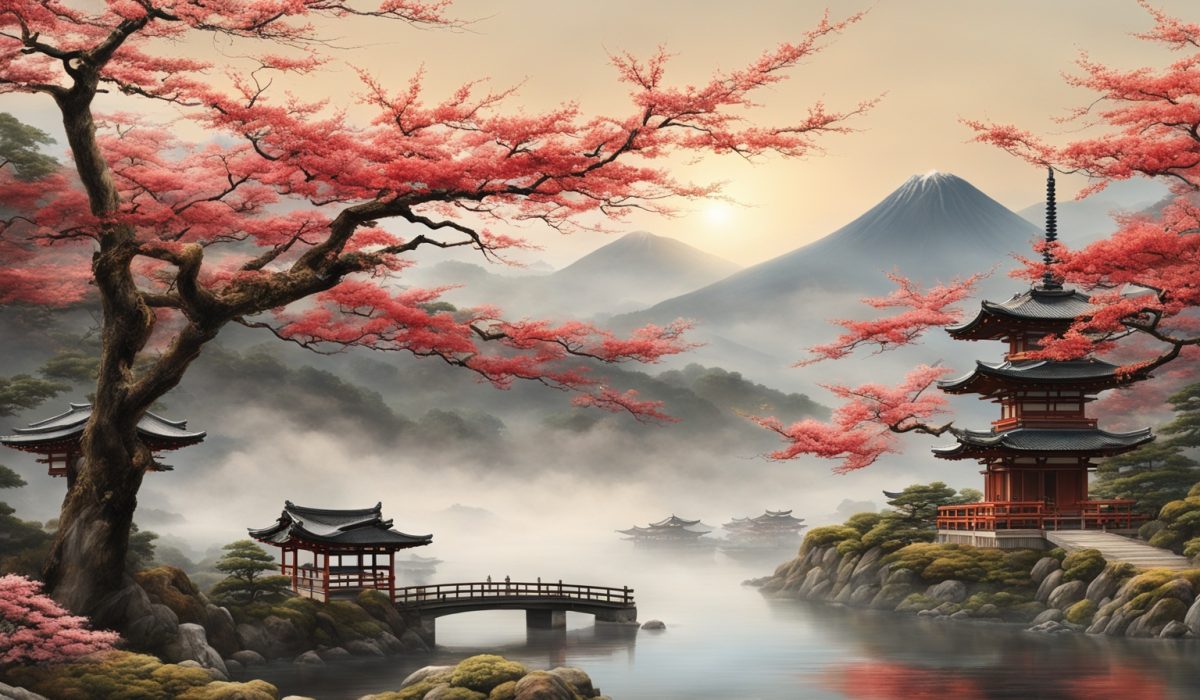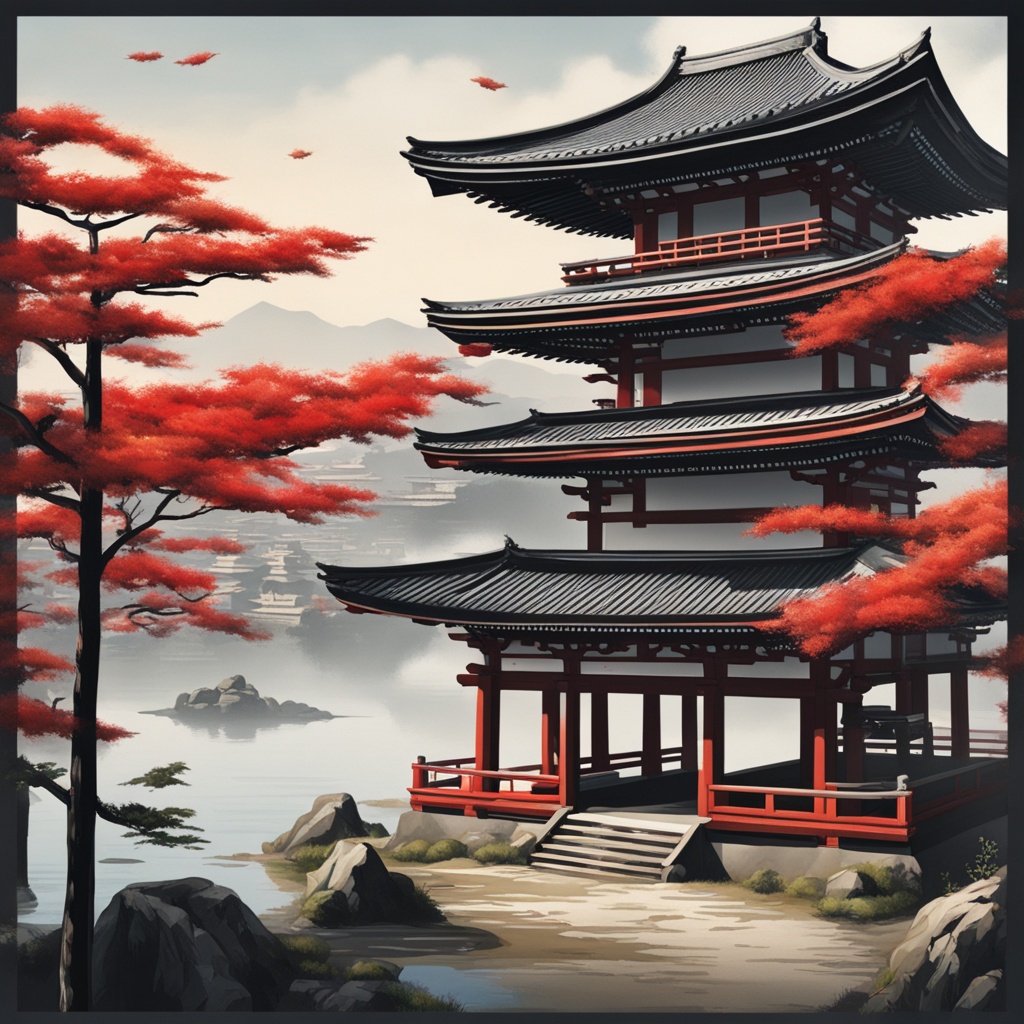Exploring the Timeless Beauty of Japanese Art Prints

Japanese art prints, known for their intricate designs and cultural depth, have captivated art enthusiasts for centuries. These prints offer a fascinating glimpse into Japan’s rich history and artistic heritage, tracing their origins back to ancient times. Renowned artists have made significant contributions to this art form, each bringing unique techniques and materials to their work. The prints often feature iconic themes and motifs that reflect Japan’s natural beauty and societal values. Interestingly, Japanese art prints have also had a profound influence on Western art, inspiring many artists and movements. For collectors, understanding how to preserve these delicate works is crucial, while modern interpretations continue to evolve, showcasing contemporary artists’ creativity. Whether you’re looking to view these masterpieces in galleries or purchase them for your collection, this exploration will provide valuable insights into the timeless beauty of Japanese art prints.
CONTENT
Introduction to Japanese Art Prints
The Evolution of Japanese Art Prints
Japanese art prints, also known as ukiyo-e, have evolved significantly over the centuries. Originating in the Edo period, these prints initially focused on depicting the fleeting pleasures of urban life, such as kabuki theatre, sumo wrestling, and beautiful courtesans. As time progressed, the subject matter expanded to include landscapes, historical events, and even supernatural themes. This evolution reflects the changing tastes and interests of Japanese society, as well as advancements in printing techniques. The transition from monochrome prints to vibrant, multi-coloured works marked a significant milestone in the art form’s development. Today, Japanese art prints continue to captivate audiences worldwide, showcasing a blend of traditional and contemporary elements.
Significance in Japanese Culture
Japanese art prints hold a special place in the cultural fabric of Japan. They are not merely decorative pieces but serve as a window into the country’s history, social norms, and aesthetic values. These prints often encapsulate the essence of Japanese life, capturing scenes of everyday activities, festivals, and natural landscapes. They also reflect the philosophical and spiritual beliefs prevalent at the time, such as the appreciation for nature and the transient nature of life. The intricate details and craftsmanship involved in creating these prints demonstrate the high level of skill and dedication of Japanese artists. As cultural artefacts, they offer invaluable insights into the Japanese way of life and continue to be revered both domestically and internationally.
Global Impact and Recognition
The global impact of Japanese art prints cannot be overstated. These works have transcended cultural boundaries, influencing various art movements and artists around the world. In the late 19th and early 20th centuries, Western artists like Vincent van Gogh and Claude Monet were profoundly inspired by the unique aesthetics of Japanese prints. This cross-cultural exchange led to the development of Japonisme, a term used to describe the influence of Japanese art on Western culture. The simplicity, bold lines, and vibrant colours of Japanese prints introduced new artistic possibilities, challenging traditional Western art conventions. Today, Japanese art prints are celebrated globally, with exhibitions and collections in major museums, further cementing their status as a significant cultural and artistic phenomenon.
Historical Background and Origins
The origins of Japanese art prints can be traced back to the Edo period, which lasted from the early 17th century to the mid-19th century. During this time, Japan was under the rule of the Tokugawa shogunate, a period marked by relative peace and stability. This era saw the rise of a prosperous merchant class, who became patrons of the arts. Ukiyo-e, meaning pictures of the floating world, emerged as a popular art form, capturing the hedonistic lifestyle of the urban populace. These prints were initially monochromatic, created using woodblock printing techniques that allowed for mass production, making art accessible to a broader audience.
As the Edo period progressed, the techniques used in creating Japanese art prints became more sophisticated. The introduction of polychrome printing, known as nishiki-e, revolutionised the art form. Artists began to experiment with multiple woodblocks, each inked with different colours, to produce vibrant and intricate prints. This development allowed for greater artistic expression and complexity in the designs. Notable artists such as Katsushika Hokusai and Utagawa Hiroshige emerged during this period, creating iconic works that depicted landscapes, flora, and fauna with remarkable detail and beauty. Their contributions significantly shaped the evolution of Japanese art prints and left a lasting legacy.
The historical context of Japanese art prints is also deeply intertwined with the country’s isolationist policies during the Edo period. The sakoku policy, which restricted foreign trade and influence, allowed Japanese culture to develop uniquely and independently. This isolation fostered a distinct artistic style that was uninfluenced by Western trends. However, the eventual opening of Japan to the West in the mid-19th century led to a cultural exchange that significantly impacted both Japanese and Western art. The Meiji Restoration, which marked the end of the shogunate and the beginning of modern Japan, further influenced the themes and techniques of Japanese art prints, blending traditional elements with new, global perspectives.
Key Artists and Their Contributions
Katsushika Hokusai
Katsushika Hokusai is perhaps the most renowned artist in the world of Japanese art prints. Born in 1760, Hokusai’s career spanned over seven decades, during which he produced more than 30,000 works. His most famous series, Thirty-Six Views of Mount Fuji, includes the iconic print The Great Wave off Kanagawa. Hokusai’s work is characterised by its dynamic compositions, innovative use of perspective, and meticulous attention to detail. He was a master of capturing the beauty and power of nature, often depicting landscapes, flora, and fauna with a sense of movement and vitality. Hokusai’s influence extended beyond Japan, inspiring Western artists and contributing to the Japonisme movement in Europe. His legacy continues to be celebrated, making him a pivotal figure in the history of Japanese art prints.
Utagawa Hiroshige
Utagawa Hiroshige, born in 1797, is another towering figure in the realm of Japanese art prints. Known for his poetic and serene landscapes, Hiroshige’s work offers a tranquil counterpoint to the dynamic energy of Hokusai. His most acclaimed series, The Fifty-Three Stations of the Tokaido, captures the scenic beauty and everyday life along the Tokaido road, a vital travel route in Edo-period Japan. Hiroshige’s use of colour, light, and composition creates a sense of harmony and balance, drawing viewers into the peaceful world he depicts. His ability to evoke mood and atmosphere through subtle details has earned him a lasting place in the annals of art history. Like Hokusai, Hiroshige’s work had a significant impact on Western artists, further cementing his role as a key contributor to the global appreciation of Japanese art prints.
Kitagawa Utamaro
Kitagawa Utamaro, born in the mid-1750s, is celebrated for his exquisite portraits of women, known as bijin-ga. Utamaro’s work focuses on capturing the beauty, grace, and individuality of his subjects, often depicting courtesans and geishas in intimate, everyday settings. His mastery of line and form, combined with a keen eye for detail, allows him to convey a wide range of emotions and expressions. Utamaro’s prints are distinguished by their elegance and sophistication, making him a leading figure in the ukiyo-e genre. His innovative approach to composition and use of colour influenced many artists of his time and beyond. Utamaro’s contributions to Japanese art prints are significant, as he elevated the portrayal of women to an art form in its own right, leaving a lasting legacy that continues to be admired today.
Techniques and Materials Used
The creation of Japanese art prints, or ukiyo-e, involves a meticulous and collaborative process that requires the expertise of multiple artisans. The process begins with the artist, who designs the initial image. This design is then transferred onto a thin, semi-transparent piece of paper called hanshita-e, which serves as a guide for carving. The next step involves the woodblock carver, who painstakingly carves the design into a block of cherry wood. Each colour in the final print requires a separate woodblock, making the carving process both time-consuming and intricate. The precision and skill required at this stage are crucial, as any mistakes can compromise the entire print.
Once the woodblocks are prepared, the printer takes over. The printer applies ink to the woodblocks using brushes, ensuring an even and consistent application. The paper, typically made from mulberry bark, is then carefully placed onto the inked woodblock. Using a tool called a baren, the printer rubs the back of the paper to transfer the ink from the woodblock onto the paper. This process is repeated for each colour, requiring precise alignment, or registration, to ensure that the colours do not overlap incorrectly. The quality of the final print depends heavily on the printer’s skill in applying the ink and aligning the paper, making this a highly specialised role.
The materials used in Japanese art prints also play a significant role in their unique aesthetic. The ink, traditionally made from soot and animal glue, provides a rich and deep black that is both durable and visually striking. Natural pigments derived from minerals, plants, and even insects are used for colouring, offering a wide range of hues that are both vibrant and harmonious. The paper, known as washi, is prized for its strength, flexibility, and ability to absorb ink without bleeding. These high-quality materials, combined with the skilled craftsmanship of the artists, carvers, and printers, result in prints that are not only visually stunning but also durable enough to withstand the test of time.
Iconic Themes and Motifs
Nature and Landscapes
Nature and landscapes are among the most iconic themes in Japanese art prints, reflecting the deep connection between Japanese culture and the natural world. Artists like Katsushika Hokusai and Utagawa Hiroshige are renowned for their breathtaking depictions of mountains, rivers, and seasonal changes. These prints often capture the serene beauty of Japan’s countryside, showcasing elements such as cherry blossoms in spring, snow-covered landscapes in winter, and the majestic Mount Fuji. The attention to detail and the harmonious composition of these scenes evoke a sense of tranquillity and reverence for nature. The use of colour and perspective further enhances the immersive experience, allowing viewers to feel as though they are part of the landscape. These nature-themed prints not only celebrate the beauty of the natural world but also reflect the philosophical and spiritual beliefs of the time, such as the appreciation for the transient nature of life.
Urban Life and Entertainment
Urban life and entertainment are central themes in many Japanese art prints, particularly those created during the Edo period. These prints, often referred to as ukiyo-e, or pictures of the floating world, depict the vibrant and hedonistic lifestyle of the urban populace. Scenes of bustling marketplaces, lively festivals, and popular entertainment venues such as kabuki theatres and teahouses are common. Artists like Kitagawa Utamaro and Torii Kiyonaga captured the dynamic energy of city life, often focusing on the fashion, beauty, and leisure activities of the time. Courtesans, geishas, and actors were frequent subjects, portrayed with elegance and sophistication. These prints provide a fascinating glimpse into the social and cultural milieu of Edo-period Japan, highlighting the pleasures and diversions that defined urban life. They also serve as historical documents, offering insights into the customs, attire, and daily activities of the era.
Mythology and Folklore
Mythology and folklore are rich sources of inspiration for Japanese art prints, offering a window into the country’s spiritual and cultural heritage. These prints often depict legendary heroes, mythical creatures, and supernatural beings from Japanese folklore and religious traditions. Stories of brave samurai, mischievous fox spirits, and vengeful ghosts are brought to life through intricate and dramatic compositions. Artists like Tsukioka Yoshitoshi and Utagawa Kuniyoshi are known for their vivid and imaginative portrayals of these themes, blending realism with fantasy. The use of bold lines, striking colours, and dynamic poses creates a sense of drama and excitement, drawing viewers into the mythical world. These prints not only entertain but also convey moral lessons and cultural values, reflecting the beliefs and traditions of Japanese society. By exploring these mythological and folkloric themes, Japanese art prints offer a deeper understanding of the country’s rich narrative tapestry.
The Influence of Japanese Art Prints on Western Art
The influence of Japanese art prints on Western art became particularly pronounced in the late 19th century, following Japan’s opening to international trade. This period saw a surge of interest in Japanese aesthetics among Western artists, leading to the phenomenon known as Japonisme. The unique characteristics of Japanese prints, such as their bold compositions, use of flat planes of colour, and intricate details, offered a refreshing departure from the prevailing Western artistic conventions. Artists like Vincent van Gogh and Claude Monet were profoundly inspired by these elements, incorporating them into their own works. Van Gogh, for instance, created several pieces that directly emulated Japanese prints, while Monet’s garden scenes reflect the influence of Japanese compositional techniques and themes.
The impact of Japanese art prints extended beyond individual artists to influence entire art movements. The Impressionists, for example, were drawn to the unconventional perspectives and emphasis on everyday scenes found in ukiyo-e prints. These elements resonated with their own desire to capture fleeting moments and the effects of light and colour. Similarly, the Art Nouveau movement embraced the flowing lines and natural forms characteristic of Japanese prints, integrating these features into architecture, graphic design, and decorative arts. The simplicity and elegance of Japanese design principles provided a counterpoint to the more ornate and detailed styles that had dominated Western art, encouraging a shift towards modernism.
In addition to visual arts, Japanese prints also influenced Western literature and theatre. Writers and playwrights began to explore themes and narrative structures inspired by Japanese culture, often incorporating elements of Japanese aesthetics into their works. This cross-cultural exchange enriched both Western and Japanese artistic traditions, fostering a greater appreciation for the diversity of global art. The legacy of this influence is still evident today, as contemporary artists continue to draw inspiration from the timeless beauty and innovative techniques of Japanese art prints. Through this enduring impact, Japanese prints have secured their place as a significant and transformative force in the history of Western art.
Collecting and Preserving Japanese Art Prints
Identifying Authentic Prints
Identifying authentic Japanese art prints requires a keen eye and knowledge of specific characteristics that distinguish genuine works from reproductions. Key indicators include the quality of the paper, the presence of a publisher’s seal, and the artist’s signature. Authentic prints are typically made on washi, a traditional Japanese paper known for its durability and texture. The ink used in original prints is often rich and vibrant, with a depth that is difficult to replicate. Additionally, examining the woodblock impressions can reveal subtle details, such as the pressure applied during printing and the alignment of colours. Provenance, or the documented history of a print, also plays a crucial role in verifying authenticity. Collectors should seek prints with a well-documented lineage and, if possible, consult experts or reputable dealers to ensure they are acquiring genuine pieces. Understanding these factors is essential for building a collection of authentic Japanese art prints.
Proper Storage and Display
Proper storage and display are vital for preserving the quality and longevity of Japanese art prints. These delicate works are susceptible to damage from light, humidity, and physical handling. To protect them, prints should be stored in a cool, dry environment, away from direct sunlight and fluctuating temperatures. Acid-free materials, such as archival-quality folders and boxes, are recommended to prevent chemical reactions that can cause deterioration. When displaying prints, UV-protective glass or acrylic should be used to shield them from harmful light exposure. Additionally, prints should be mounted using archival methods that do not involve adhesives directly on the artwork. Regular inspections are necessary to check for signs of damage, such as fading, discolouration, or mould. By following these guidelines, collectors can ensure that their Japanese art prints remain in excellent condition for future generations to appreciate.
Building a Collection
Building a collection of Japanese art prints is a rewarding endeavour that involves research, networking, and a passion for the art form. Collectors should start by educating themselves about the different periods, styles, and artists to develop a discerning eye. Visiting museums, galleries, and exhibitions can provide valuable insights and inspiration. Networking with other collectors, dealers, and experts is also beneficial, as it can lead to opportunities to acquire rare and valuable prints. Auctions, both online and in-person, are common venues for purchasing prints, but buyers should be cautious and verify the authenticity and condition of the works. Establishing a budget and focusing on specific themes or artists can help guide the collection process. Over time, a well-curated collection not only reflects personal tastes and interests but also contributes to the preservation and appreciation of Japanese art prints.
Modern Interpretations and Contemporary Artists
In recent years, modern interpretations of Japanese art prints have emerged, blending traditional techniques with contemporary themes and styles. Many contemporary artists draw inspiration from the rich history of ukiyo-e, while incorporating modern elements that reflect current societal issues and personal experiences. This fusion of old and new creates a dynamic and evolving art form that resonates with today’s audience. Artists experiment with different media, such as digital technology and mixed media, to reinterpret classic motifs and compositions. These modern interpretations often challenge conventional boundaries, offering fresh perspectives and innovative approaches to the traditional art of Japanese prints.
Contemporary artists like Takashi Murakami and Yoshitomo Nara have gained international acclaim for their unique takes on Japanese art prints. Murakami, known for his Superflat style, merges traditional Japanese aesthetics with pop culture elements, creating vibrant and thought-provoking works. His use of bold colours, playful characters, and intricate details pays homage to the ukiyo-e tradition while addressing contemporary themes such as consumerism and globalisation. Similarly, Nara’s work, characterised by its whimsical yet melancholic depictions of children and animals, draws on the simplicity and emotional depth of traditional Japanese prints. These artists, among others, continue to push the boundaries of the art form, ensuring its relevance and appeal in the modern world.
The global art community has also embraced contemporary Japanese printmaking, with exhibitions and collaborations that highlight the innovative spirit of modern artists. Institutions and galleries worldwide showcase the works of contemporary Japanese printmakers, fostering cross-cultural dialogue and appreciation. This international exposure not only brings recognition to the artists but also introduces new audiences to the enduring beauty and versatility of Japanese art prints. As contemporary artists continue to explore and reinterpret this traditional art form, they contribute to its ongoing evolution, ensuring that Japanese art prints remain a vibrant and influential part of the global art landscape.
Where to View and Purchase Japanese Art Prints
Museums and Galleries
Museums and galleries are prime locations to view and purchase Japanese art prints, offering both historical and contemporary works. Institutions such as the National Gallery of Australia and the Art Gallery of New South Wales frequently host exhibitions that showcase the beauty and diversity of Japanese prints. These exhibitions provide a unique opportunity to see rare and iconic works up close, often accompanied by informative displays that delve into the history and techniques behind the prints. Additionally, some museums and galleries have gift shops or affiliated sales where visitors can purchase high-quality reproductions or even original prints. Attending these exhibitions not only enriches one’s understanding of Japanese art but also supports the preservation and promotion of this cultural heritage.
Online Marketplaces
Online marketplaces have become increasingly popular for viewing and purchasing Japanese art prints, offering a convenient and accessible platform for collectors worldwide. Websites such as Artsy, eBay, and specialist auction houses like Christie’s and Sotheby’s feature a wide range of prints, from antique ukiyo-e to contemporary interpretations. These platforms often provide detailed descriptions, provenance information, and high-resolution images, allowing buyers to make informed decisions. Additionally, online marketplaces frequently host auctions, giving collectors the chance to acquire rare and valuable prints. While purchasing online offers convenience, it is essential to verify the authenticity and condition of the prints through reputable sellers and expert appraisals. This ensures that collectors invest in genuine and well-preserved works of art.
Specialist Dealers and Shops
Specialist dealers and shops dedicated to Japanese art prints offer a curated selection of works and expert knowledge, making them valuable resources for collectors. These dealers often have extensive experience and connections within the art world, allowing them to source rare and high-quality prints. Shops like The Tolman Collection in Tokyo and Scholten Japanese Art in New York are renowned for their expertise and exceptional collections. Visiting these dealers provides an opportunity to see a diverse range of prints in person and receive personalised advice on building a collection. Many specialist dealers also offer services such as appraisals, restorations, and framing, ensuring that prints are well-preserved and presented. Engaging with specialist dealers enhances the collecting experience, providing both education and access to some of the finest Japanese art prints available.

Conclusion and Key Takeaways
Japanese art prints, with their rich history and intricate craftsmanship, offer a unique window into Japan’s cultural and artistic heritage. From the Edo period’s ukiyo-e to modern interpretations, these prints have evolved while retaining their core elements of beauty, detail, and thematic depth. Key artists like Katsushika Hokusai, Utagawa Hiroshige, and Kitagawa Utamaro have left an indelible mark on the art form, each contributing distinct styles and techniques that continue to inspire both traditional and contemporary works. Understanding the historical context and the evolution of these prints enhances our appreciation of their artistic and cultural significance.
The influence of Japanese art prints extends far beyond Japan, impacting Western art and contributing to movements such as Impressionism and Art Nouveau. The cross-cultural exchange initiated by the opening of Japan to international trade has enriched global art, fostering a deeper appreciation for diverse artistic traditions. This ongoing dialogue between Eastern and Western art forms underscores the universal appeal and timeless beauty of Japanese prints. Collectors and enthusiasts alike can explore this rich tapestry through various avenues, from museums and galleries to online marketplaces and specialist dealers.
Preserving and collecting Japanese art prints requires a keen understanding of their unique characteristics and the proper methods for care and display. Identifying authentic prints, employing archival storage techniques, and seeking expert advice are essential steps in maintaining the integrity and value of these works. As contemporary artists continue to reinterpret traditional themes, the art form remains vibrant and relevant, bridging the past and present. Whether viewed in a museum, purchased from a dealer, or discovered online, Japanese art prints offer a captivating journey through time, culture, and artistic innovation.






